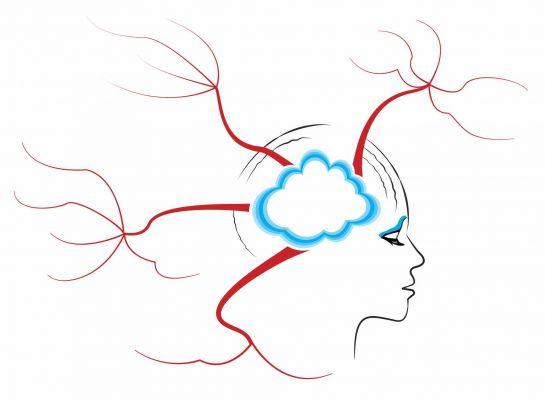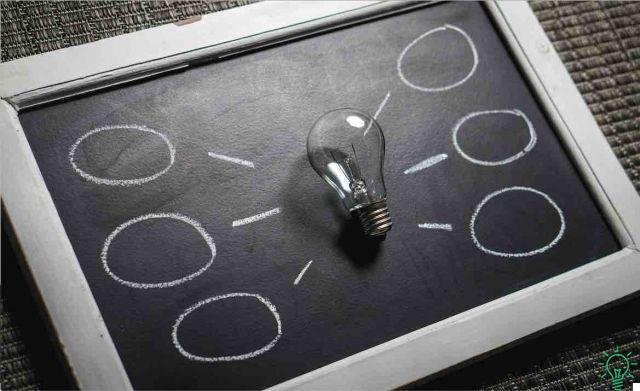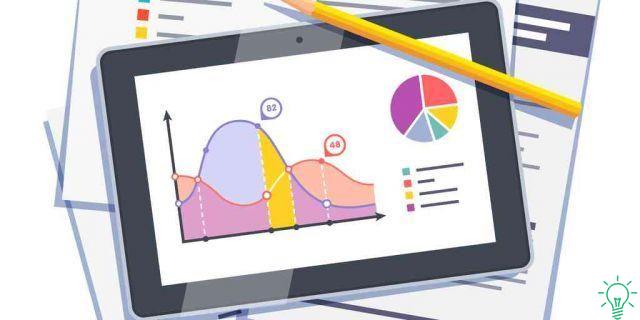
What is a mind map?
A mind map is a means to capture thoughts or information and put them in order by association.
It helps you to collect ideas, to create new ones, to remember them and, in essence, to think more effectively about a text, a project, an idea.
In this article we will see how they were born, how they are made, how they are built, what they are for, what are their advantages and limitations.
If you already know them and have tried to use them but they have not convinced you, you can go directly to the end of the article to see my opinion on mind maps and understand when they should really be used.
If, on the other hand, you don't know them, let's quickly start from their story and see step by step everything else.
The first traces of diagrams and graphics similar to mental maps date back to the 3rd century AD thanks to the work of the philosopher Porphyry of Tire.
In the modern world, however, there is one theorist in particular who is considered the pioneer - as well as the true progenitor - of this topic: Tony Buzan.
The British psychologist was in fact the one who popularized the term "mind map" and who studied in depth how our brain interacts with this tool.
He also created a software to build this kind of maps, which we will talk about later.
The elements of a mind map
Mind maps can be created in different ways, but each of them is composed of some essential elements that determine their identity and effectiveness:
- main theme: the topic around which the map will develop;
- associations: the connections between the concepts that expand radially from the center, forming the branches;
- lines: represent graphically the associations and it is preferable that they are curved, because they are more appreciated by our brain;
- keyword: they express the concepts or data that are represented
- nearness: associated keywords or images must be close to each other;
- 7: the maximum number of first level associations that can start from the central theme. If there are more, you will find it hard to remember them all;
- Colors, pictograms, symbols, figures. They make the map vivid and can be organized into codes that add meaning to what is written.
Later I will show you how to decline these components in order to obtain not a simple tree diagram but a real mind map.
But first let's see the strengths and weaknesses of the maps.
Pros and cons of mind maps
Like all things in the world, mind maps have pros and cons. Or rather: they are very useful for certain activities, less so for others.
Their main advantage is that of stimulate creative and non-linear thinking. They also help to dissect the sub-topics of a theme in a fluid, simple and visually very clear way.
In reality, clear for those who made it, while those who read it may have big doubts!
Mind maps are mostly based on association processes that are intuitive and almost unconscious. On the other hand, the linear and rational logic is not part of this tool rather than conceptual maps.
Wanting to schematize the pro, it can be said that mind maps:
- There are easy to learn and enjoyable to use, for which they can be inserted among the didactic tools from primary school
- They encourageself expression and creativity, both in the choice of associations and in the graphic part
- Through the associations of ideas, they organize information in a very personalized way with respect to the subject who makes them, and therefore they are easy to remember
- They involve, in their creation, both cerebral hemispheres: the left, which is that of logical - structured thinking and the right which is that of associative - creative thinking
- In many students, precisely because of the creative effort they require, they favor the concentration.
On the other hand, they also present some disadvantages:
- Being very attached to who creates them - everyone makes a different map of the same topic! - they are difficult to understand for others and therefore are not very useful for teaching.
- Can be not very logical, because they link concepts by intuitive association.
- They can become very complex and do lose sight of what's really important. On the other hand, if you have ever played a game of associations of ideas, you will have happened to land very far from where you started.
- There are not very synthetic, that is, they are able to represent a few concepts per unit of space.
- In many students, precisely because of the creative effort they require, they favor the de-concentration (you will have noticed how this sentence is exactly the mirror of sentence 5 of the advantages!).
A mind map is therefore a very good one support during thought processing and idea generation.
But from a point of view of the study of detail and memorization mind map of a topic is not an effective tool.
It is enough to see some examples of mind maps to realize that they are not very suitable for the study of most university level exams.
In fact, they do too many, and too big. In addition to the not negligible problem of time which is needed to make one. And the fact that the logic of representation of concepts and data it's not exactly iron.
In short, to study an exam with mind maps you risk having to produce hundreds of sheets and leaflets that collect a low number of information in an unstructured way.
Which makes them a real nightmare when it comes to brushing up.
When to use mind maps
Given the merits but also the great limitations of mind maps, the time has come to enter the practical aspect and describe the situations in which, at least in my opinion, mind maps could be useful for you:
- during lessons or immediately after, to maintain concentration and take notes on the general concepts that are treated. From this point of view, however, I clearly prefer the Cornell Method
- to do brainstorming on a given topic, independently or even in a group
- to memorize using the visual memory, with the limit, however, that, going into the details, they become much less effective
- to vary the study a little during a long pattern or memorization session. The mind map makes you "catch your breath" without losing all that time
- when you need to stimulate your skills problem solving and lateral thinking
- to connect between them information that you have collected from different sources and that you are not clear on how to mix
- to lay the foundation for the development of a project
- to train yours creativeness, replacing or completing the classic brainstorming techniques
As you can see, the areas of application are several: whenever you happen to find yourself in one of these circumstances, try to deal with it using the maps.
Like? I'll explain it to you right away.
How to create a mind map in a few steps
After understanding its usefulness and limitations, let's move on to the second - and crucial - practical question: how do you create a mind map?
First of all, to get comfortable with it, I suggest you start the old way: with paper, pen and colors.
Put the sheet horizontally e starts from the center, where you will draw or write - in the form of a keyword - the theme to be explored.
Starting from that, develops the sub-topics radially connecting them with curved lines and representing them with pictograms or different colors. As I told you before, try not to enter more than 7 first level associations.
For each of these subtopics, you will need to repeat the process branching the map more and more as you get deeper into the details.
It is a very intuitive process: the more you practice using it, the more natural it will come to you.
The complex part will perhaps be that of abandoning words in favor of images. In mind maps they are granted keywords only, better if written in capital letters, while the sentences are absolutely banned.
The keywords should be written above the curved lines.
Colors and symbols instead they are very appreciated by our brain: use them in abundance even if drawing is not your strong point. It is said that a picture is worth a thousand words, right? Here, in the case of mind maps this saying is more valid than ever.
Mind mapping software
Le mental associations, as they are intuitive and not logical, they develop quickly.
I therefore prefer to create maps with pen and paper, because I use them more quickly and I am better able to keep the rhythm of my thoughts without risking losing some ideas along the way.
But I have been playing for a while, while you may be a digital native.
Once you have mastered the method then, you can also have fun creating digital mind maps with one of the many software available.
Canva, in the context of the many graphic tools it offers, has developed a specific one dedicated to maps. Among other things, very simple and intuitive, as per the tradition of the Australian company.
Another well known tool was created by Tony Buzan and allows you to create colorful diagrams rich in images. Born as iMindMap, it is now called Ayoa; it is paid but you can try it for free for 7 days.
If you are satisfied with maps that are a little more linear but always nice and colorful, you can opt for the online tool Miro. In this case you have a free version available, with some limitations in the number of projects open at the same time.
Another well-made and immediate tool to use, which allows you to drag the various elements directly onto the map, is Milanote. This is also usable online and is available for free or for a fee.
Do you prefer to have everything close at hand? There are also applications to bring your mind maps to life on your phone. One of them is Mindmeister, which allows you to export files in different formats so you can share them.
The software to create mind maps on the computer or smartphone are really many. I suggest you google "mind map software" or "mind map software", try some and find the one that's right for you. And if you don't find it, don't despair: sheets, pens and markers are always available and perfect for this use.
Mind Map and Concept Map: Are They the Same?
When it comes to maps, there is a lot of confusion and little awareness. Most people, including students and - not infrequently - professors, use the terms "mind map" and "concept map" interchangeably. In reality they are two different things, even if some traits make them similar.
We have said that the mind map is a radial diagram rich in images and colors, suitable for generating ideas with creativity and connecting them through association mechanisms.
La conceptual map, instead, it usually develops from top to bottom to schematize concepts and information in a logical way and hierarchical.
In the concept map there are also things that are forbidden in mind maps: for example fshort satins, verbal predicates, connecting arrows.
While I am absent or reduced to a minimum colors, curved lines, fancy graphic elements.
The mind map is creative and intuitive, the conceptual is rational and logical.
Both, at least for the purposes of the study, lack in terms of:
- Synthesis: because they need too much space for the amount of knowledge they represent.
- Efficiency: because compared to what you learn and memorize they take a long time to do.
The conceptual ones have the advantage of being more useful than the mental ones for the review, because they represent the concepts in an orderly and well connected way.
My take on mind maps
Perhaps you got the idea, reading this article, that I don't like mind maps and that they are useless when studying.
In reality this is not the case.
First, whenever you make an effort on the study material, that is, that any of its re-elaborations are carried out, whether it is a map, a scheme, a summary or, absurdly, the construction of a song, we cannot speak of uselessness.
At the limit, of poor efficiency, when in the face of the time you invest you do not have an adequate result.
Secondly, myself I appreciate and use mind maps.
For example:
- To prepare the writing of an article, where I often first make a mind map and then organize everything with a conceptual one.
- To decide the schedule of a conference, in the same way as above
- To analyze a problem by generating ideas about it
In short, I use them to get things out of my mind. Not to put them in.
In this, in pulling out, I have to say that mind maps are great. That is, they help you to rework and build your thoughts on what you have learned.
If you study, whether it is for an exam, for work, or for pure personal interest, you know that the greatest commitment, in terms of energy and time, is taken by "putting in", that is acquire inputs and information that are given to you.
However, stopping every now and then to build a mind map can give you a greater, original and deeper understanding of what you are learning.
A mind map will never be efficient in remembering the list of cranial nerves, the numbers of the articles of the civil code, the succession of historical events, the functions of the cytoskeleton or how the gross domestic product of a state is calculated ...
But it can turn on bright light bulbs when it comes to putting this knowledge to work.


























